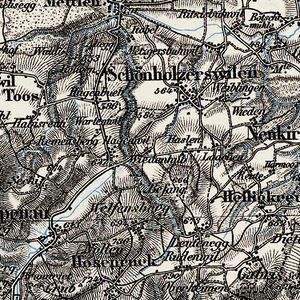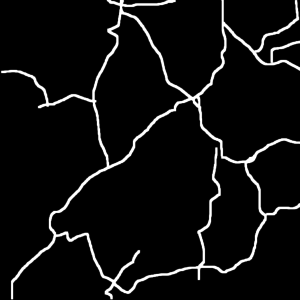Switzerland Road extraction from historical maps: Difference between revisions
| Line 75: | Line 75: | ||
== Methodology == | == Methodology == | ||
'''Dataset''': | '''Dataset''': | ||
*Dufour Map from | *Dufour Map from GeoVITe | ||
*The 1:100 000 Topographic Map of Switzerland was the first official series of maps that encompassed the whole of Switzerland. It was published in the period from 1845 to 1865 and thus coincides with the creation of the modern Swiss Confederation. | *The 1:100 000 Topographic Map of Switzerland was the first official series of maps that encompassed the whole of Switzerland. It was published in the period from 1845 to 1865 and thus coincides with the creation of the modern Swiss Confederation. | ||
| Line 94: | Line 94: | ||
'''Data preparation:''' | '''Data preparation:''' | ||
* | *GeoVITe: Automatic data crawling / Manually data accessing | ||
*Swisstopo: black-and-white images -> difficult to annotate with low resolution | *Swisstopo: black-and-white images -> difficult to annotate with low resolution | ||
Revision as of 01:19, 25 November 2021
Introduction
Historical maps provide valuable information about spatial transformation of the landscape over time spans. This project, based on historical maps of Switzerland, is to vectorize road network and landcover and to visualize the transformation using a machine vision library developed at the DHLAB.
The main data source of this project is GeoVITe (Geodata Versatile Information Transfer environment),a browser-based access to geodata for research and teaching, operated by the Institute of Cartography and Geoinformation of ETH Zurich (IKG) since 2008.
Motivation
Historical maps contain rich information, which are helpful in urban planning, historical study, and various humanities research. Digitization of massive printed documents is a significant step before further research. However, most historical maps are scanned in rasterized graphical images. To conveniently use geographic data extracted from these maps in GIS software, vectorization is needed.
However, vectorization process has always been a challenge due to manual painting. In this project, we try to use dh-segmentation tool for automatic vectorization. With 60 high-resolution patches(1km*1km) for the training dataset, the model is tested on randomly selected patches and proposed to approximate idealized main roads of Dufour map of Switzerland.
Plan and Milestones
Milestones:
1) Choose the topic for the project, present the first ideas. Get familiar with the data provided.
2) Define the final subject of the project. Find reliable sources of information.
3) Prepare a small dataset (60 samples) for training and testing a Convolutional Neural Network, main part of the dhSegment tool. This dataset should consist of small patches extracted from the Dufour Map of Switzerland with binary labels created in GIMP.
4) Try the dhSegment tool with the created dataset. Evaluate the results, modify the algorithm. Make conclusions about using this tool for road extraction.
5) Download the final dataset: patches completely covering the whole map of Switzerland.
6) Test the dhSegment tool on the final dataset.
7) Get the vectorised map of roads with OpenCV.
| Date | Task | Completion |
|---|---|---|
| By Week 4 |
|
✓ |
| By Week 6 |
|
✓ |
| By Week 8 |
|
✓ |
| By Week 10 |
|
... |
| By Week 12 |
|
... |
| By Week 14 |
|
... |
Methodology
Dataset:
- Dufour Map from GeoVITe
- The 1:100 000 Topographic Map of Switzerland was the first official series of maps that encompassed the whole of Switzerland. It was published in the period from 1845 to 1865 and thus coincides with the creation of the modern Swiss Confederation.
- Classification : Main roads
- Layer: Topographic Raster Maps - Historical Maps - Dufour Maps
- Coordinate system: CH1903/LV03
- Predefined Grids: 1:25000
- Patch Size: 1000 by 1000 pixels
DhSegment:
A generic framework for historical document processing using Deep learning approach, created by Benoit Seguin and Sofia Ares Oliveira at DHLAB, EPFL.
Data preparation:
- GeoVITe: Automatic data crawling / Manually data accessing
- Swisstopo: black-and-white images -> difficult to annotate with low resolution
Labeling:
60 patches (1000x1000 pixels) using GIMP for model testing:
- Original patches with spatial information: tiff
- Patches for training: jpeg
- labels in black and white: png
Testing:
Limitation
The main limitation of our project is due to the data source platform. GeoVITE only allows small patches downloading, while automatic downloading leads to unsatisfying low-quality images.


